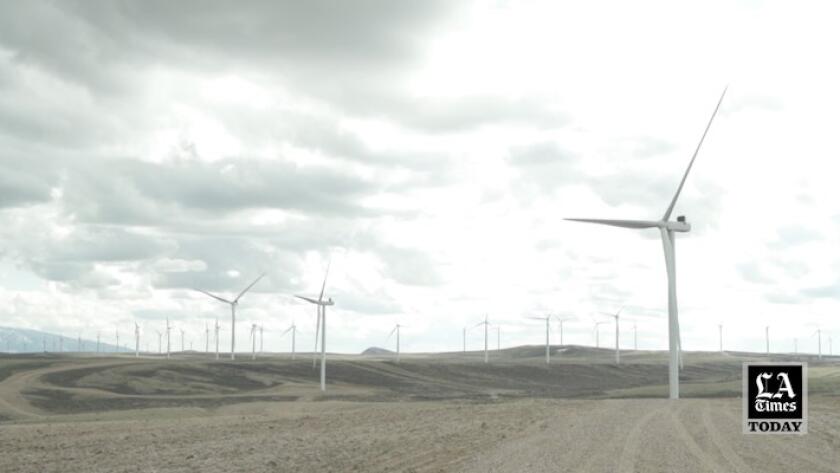We’re going on a clean energy tour of the American West. Come along for the ride
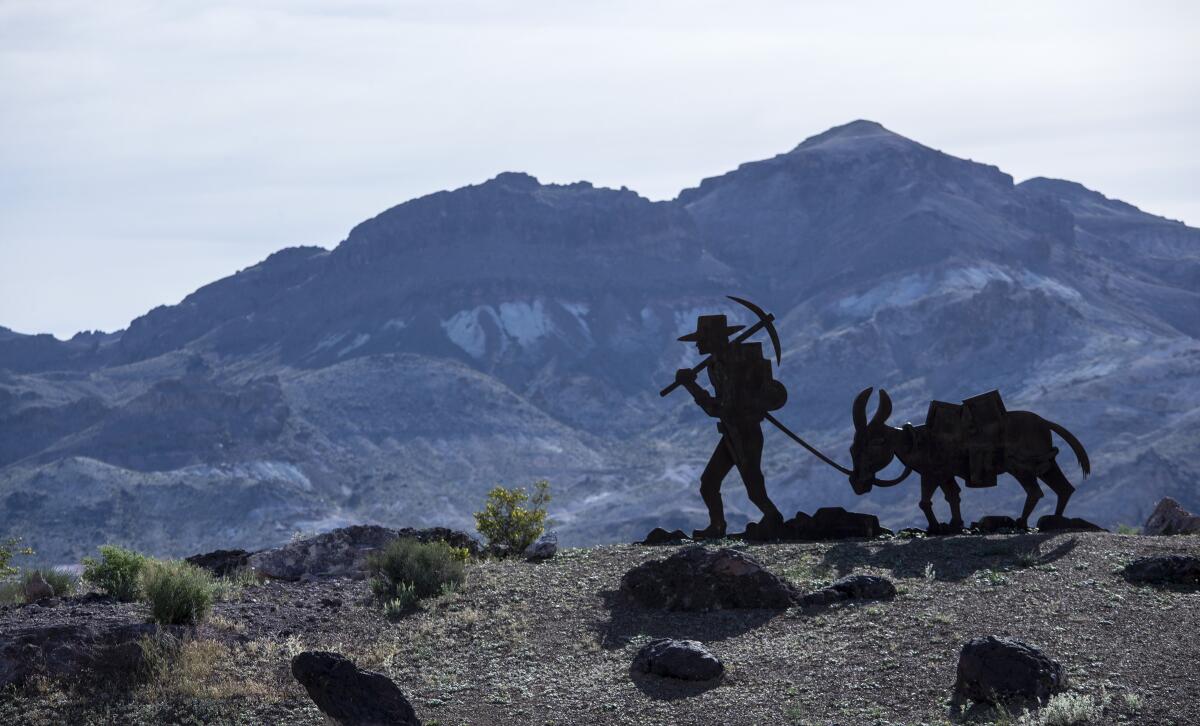
- Share via
This is the April 28, 2022, edition of Boiling Point, a weekly newsletter about climate change and the environment in California and the American West. Sign up here to get it in your inbox.
This time next week, I’ll be somewhere between Rawlins, Wyo., and Vernal, Utah, traveling the route of a 732-mile electric power line that one of the world’s richest men is preparing to build across four states, to bring wind energy to Southern California.
I’ll be joined by a Los Angeles Times photographer and video crew. The towns and ecosystems we’re lucky enough to visit should be gorgeous this time of year, with wildflowers blooming under sunny skies and rivers flowing with Rocky Mountain snowmelt.
We’ll be reporting on the biggest clean energy infrastructure project in the United States. The corporate empire of billionaire Phil Anschutz — owner of the Coachella Valley Music and Arts Festival, the L.A. arena formerly known as Staples Center and much more — has begun construction of a 3,000-megawatt wind farm on a sweeping cattle ranch that straddles the Continental Divide. Anschutz’s team hopes to start building the transmission line next year, to sell all that renewable electricity to power-hungry cities.
For context, 3,000 megawatts is far more capacity than California’s largest power source, the Diablo Canyon nuclear plant.
After two years of mostly telling stories from my apartment, I’m excited to get back into the field and learn about the opportunities and challenges of building clean energy projects — projects that are badly needed to confront the climate crisis, but which can also destroy wildlife habitat, infringe on sacred tribal lands and reshape rural communities in ways that locals don’t always appreciate.
This trip will be just the beginning of an ambitious L.A. Times reporting project we’re calling “Repowering the West.”
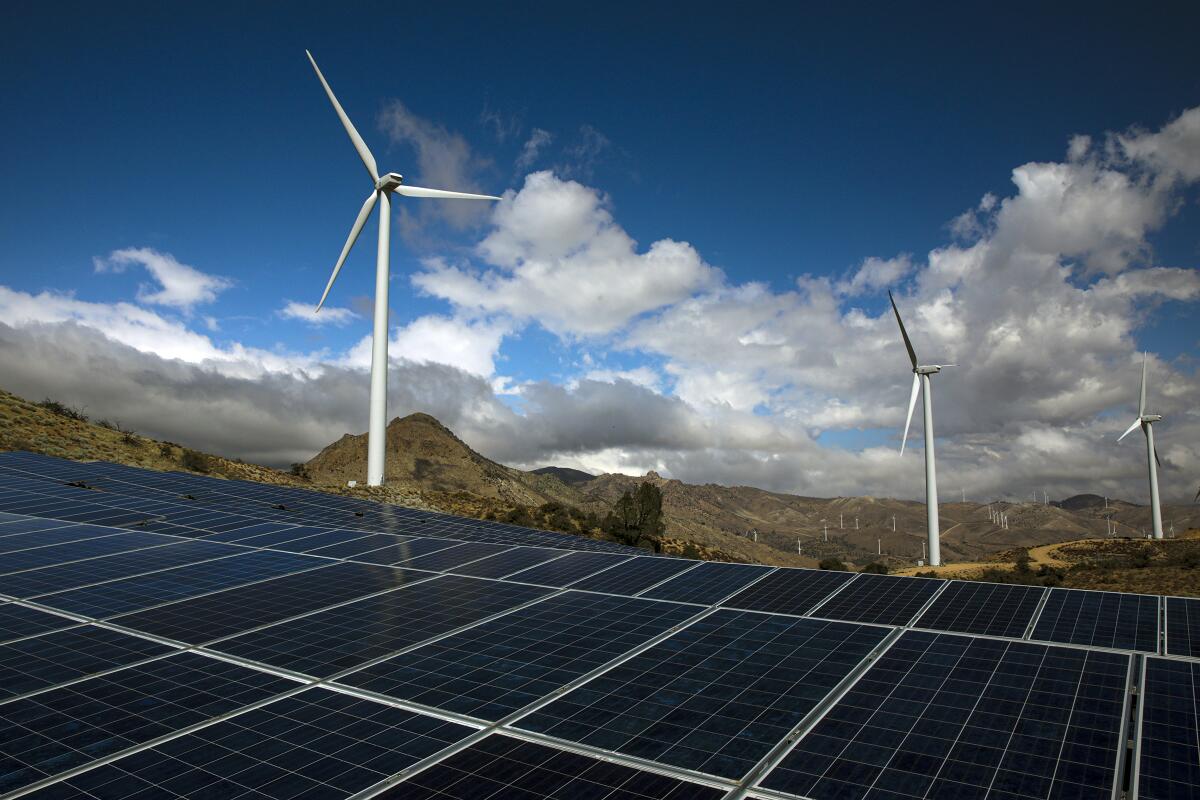
Over the last century, cities including Los Angeles, Phoenix and Las Vegas reshaped the American West by building coal plants, hydropower dams and nuclear reactors to fuel their growth. Now those cities are on the verge of doing it again, only this time with solar panels, wind turbines, long-distance transmission lines and lithium mines. These proposals are igniting opposition from conservationists, tribal activists and rural residents looking to protect landscapes and ecosystems — and at times their way of life.
It’s a combustible situation that could delay the urgent transition to climate-friendly energy — or perpetuate the ecological harms, environmental injustices and political power disparities of the last century, if developers and policymakers aren’t careful.
My goal is to tell stories that help illuminate sustainable paths forward — not just along Anschutz’s power line, but across the West. I’m planning additional reporting trips to the Navajo Nation, California’s Imperial Valley, the Columbia River and more.
- Share via
Watch L.A. Times Today at 7 p.m. on Spectrum News 1 on Channel 1 or live stream on the Spectrum News App. Palos Verdes Peninsula and Orange County viewers can watch on Cox Systems on channel 99.
I hope you’ll follow along with our reporting, starting this Monday. I’ll share updates from the road via my Twitter account, @Sammy_Roth, and in next week’s Boiling Point newsletter, with more to come in future L.A. Times stories and newsletters.
Please email me your questions, comments and suggestions about what topics and landscapes we should explore in the coming months. Especially if you live near the route of Anschutz’s planned TransWest Express power line — which will begin outside Rawlins and end in Boulder City, Nev., near the California border — I’d love to hear from you, and maybe even meet up next week.
I should note that Anschutz Corp. has spent more than 15 years and hundreds of millions of dollars planning its wind farm and transmission line, in part to minimize environmental damage and resolve conflicts with landowners. But more on that soon.
***
In advance of next week’s trip, I had a chance to talk one-on-one with U.S. Energy Secretary Jennifer Granholm.
The former Michigan governor was in Southern California to meet with residents of Salton Sea communities whose lives might be changed by lithium extraction, and to visit the San Onofre nuclear plant, which shut down in 2012 after a major malfunction.
At San Onofre, Granholm stood in front of a field of nuclear waste storage canisters, a stone’s throw from the Pacific Ocean; I could hear water lapping against the shore and see surfers enjoying the waves. She took questions from journalists, at one point suggesting the federal government will likely have to pay some community to serve as a permanent storage site for the spent nuclear fuel piling up at power plants across the country, as Rob Nikolewski reports for the San Diego Union-Tribune.
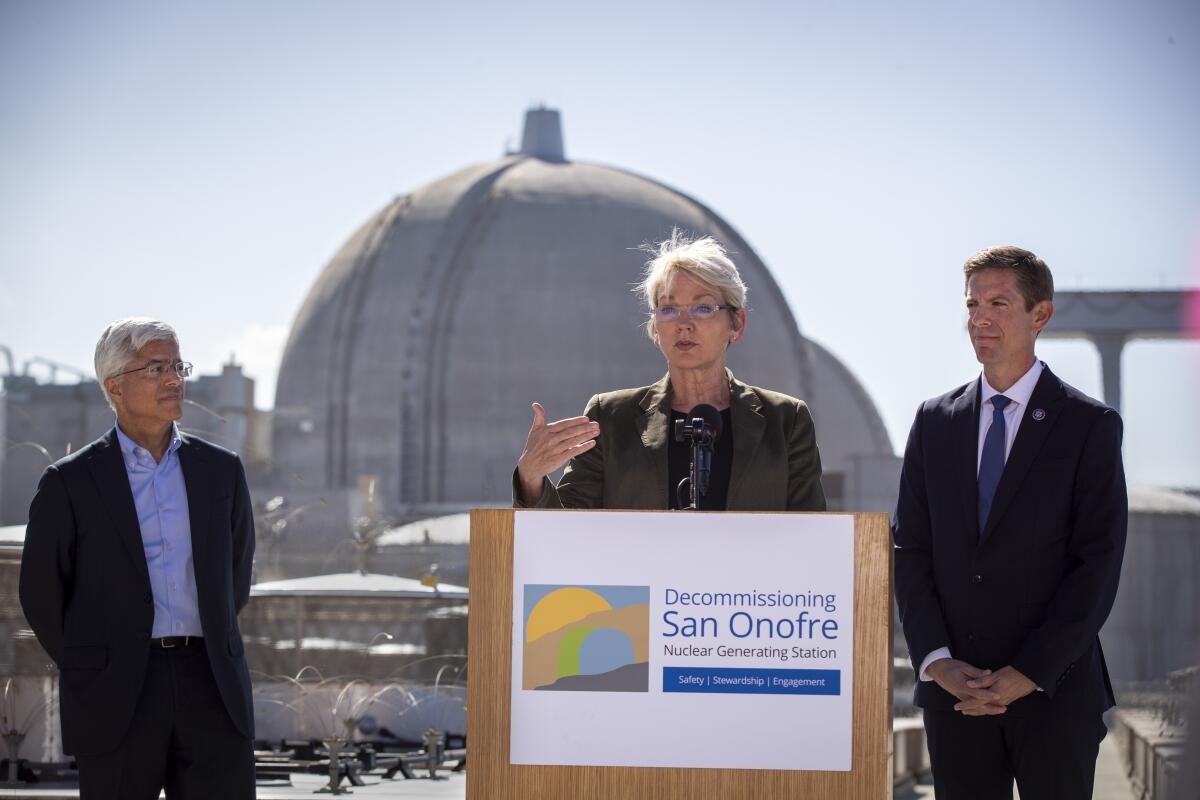
Later that day, Granholm acknowledged that the $6-billion nuclear bailout fund her department announced last week — designed to rescue nuclear plants facing closure for economic reasons — almost certainly won’t save California’s Diablo Canyon facility.
“We’ll see what happens, but I’m not sure that the community [around] Diablo Canyon is on board yet,” she told reporters.
As I’ve written previously, the state’s political leadership is committed to closing Diablo in 2025, as is plant owner Pacific Gas & Electric. But a recent poll co-sponsored by The Times found that more California voters favor keeping the plant open than closing it. Supporters see nuclear as a climate-friendly power source that can generate electricity around the clock, unlike solar and wind — meaning even though Anschutz’s wind farm would be bigger, it wouldn’t produce as much electricity as Diablo Canyon.
When Granholm and I sat down at the Los Angeles Cleantech Incubator — a city-backed nonprofit with a sprawling innovation campus — I pressed her on whether California should reconsider shutting down Diablo. She didn’t take the bait.
“I would not substitute my judgment for the folks at the local level,” she said.
The Energy secretary was more eager to talk about the infrastructure bill approved by Congress and signed by President Biden last year, which included $62 billion for the Department of Energy. Granholm said the agency is prioritizing community engagement as it makes plans to distribute those funds, to ensure that clean energy development benefits everyone.
That means seeking input from low-income communities and people of color, as well as rural towns that often don’t have the institutional capacity to apply for federal funds, a topic explored by Kylie Mohr and Theo Whitcomb at High Country News.
When I told Granholm about my upcoming road trip along the Anschutz power-line route — and asked her how the Biden administration can accelerate these types of projects — she pointed to the importance of finding “paths of least resistance,” such as building electric wires along freeways and avoiding areas that are sacred to Native American tribes, or are crucial for wildlife. She also pointed to Interior Secretary Deb Haaland’s efforts to speed up approval of clean energy infrastructure on public lands.
“The amount of transmission that we’ve got to add ... is just so massive,” she said.
Meanwhile, the Federal Energy Regulatory Commission is working to encourage power-line construction by prodding utilities and state officials to more thoroughly study the long-term benefits of new transmission, as Jeff St. John explains for Canary Media.
But all those efforts feel incremental at a time when researchers say limiting global warming to 1.5 degrees Celsius — and thus avoiding the worst impacts of climate change — will require dramatic transformation of energy systems.
I asked Granholm what would prompt that kind of shift. She pointed to the clean energy tax credits embedded in Biden’s “Build Back Better” bill, which congressional Democrats still hope to pass some version of despite fierce Republican opposition.
“The transformative thing has to be these tax credits, to get the private sector engaged,” she said.
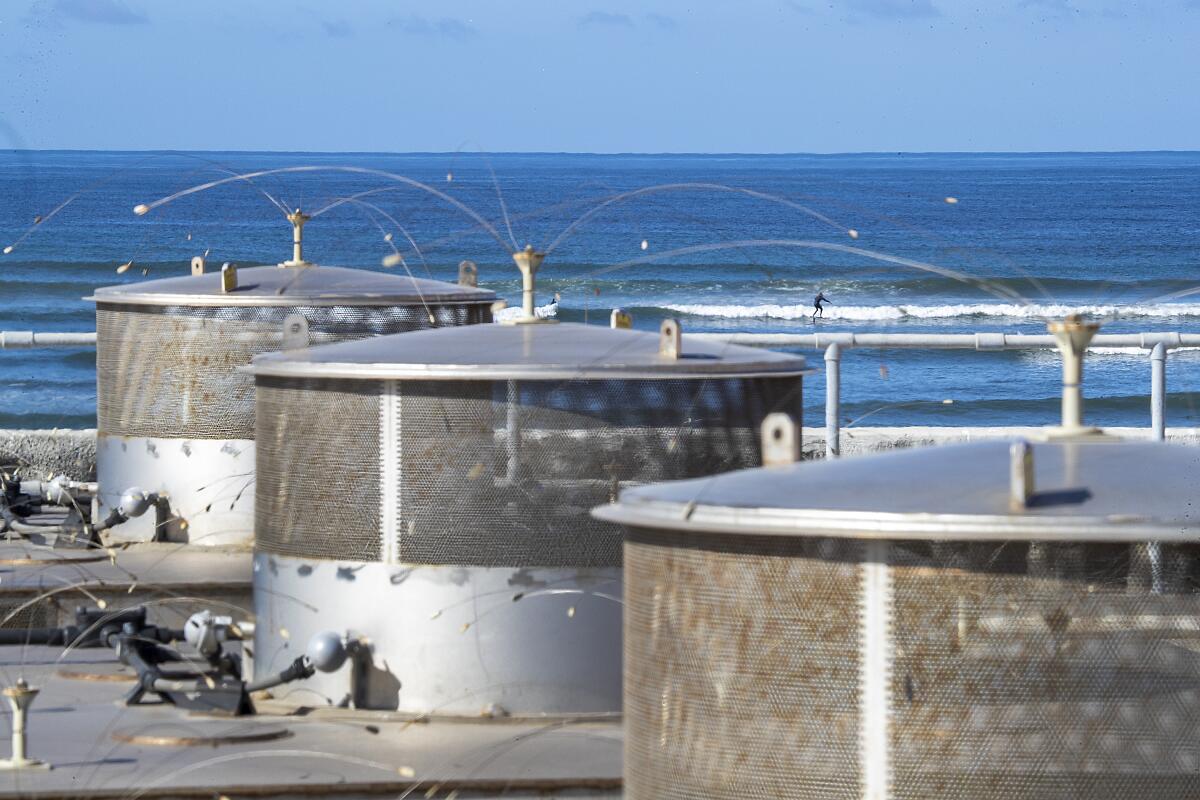
Granholm also told me the Western U.S. needs a regional transmission organization — a multi-state agency to govern the flow of electricity across the region, much as the California Independent System Operator does for most of the Golden State today.
Supporters say a regional transmission authority would make it easier to eliminate fossil fuels by sharing solar and wind energy across state lines. Critics worry about California ceding too much control of its power mix to red-state lawmakers.
Granholm thinks a regional authority is a good idea. She told me her department is “in discussions about it.”
In the meantime, California and other Western states have partnered on a narrower electricity-sharing program called the Energy Imbalance Market, as I wrote last year. The utilities and grid operators participating in the market — which collectively serve tens of millions of people across 10 states — have saved more than $2 billion since 2014, officials said last week. A proposal to expand the market — which would involve member states giving up a bit more sovereignty — is supposed to be released this week.
The relative lack of coordination among Western states is far from the only political obstacle to growing clean energy.
Last month, Biden’s Commerce Department said it would investigate allegations from a San Jose solar-panel maker that Chinese manufacturers are dodging import tariffs by building solar panels in Cambodia, Malaysia, Thailand and Vietnam.
U.S. solar developers — who depend on low-cost panels built overseas to build cost-effective solar farms — say the threat of tariffs has thrown the industry into crisis, causing projects to be delayed or canceled and putting more than 100,000 jobs at risk.
When I asked Granholm about the Commerce Department’s investigation, she lightly slapped her forehead with both hands and looked down in a gesture of frustration. She described the investigation as “friendly fire” on the administration’s clean energy agenda, and told me the Commerce Department needs to keep the investigation narrow and resolve it quickly.
Commerce Secretary Gina Raimondo “is looking at what can be done within the legal framework that exists,” Granholm said.
“This is why accelerating the buildout of our own supply chains is so important,” she added.
***
Again, follow me on Twitter to keep up with next week’s trip. And feel free to email with any ideas. I’m excited to hit the road!
Until then, here’s what’s happening around the West:
TOP STORIES
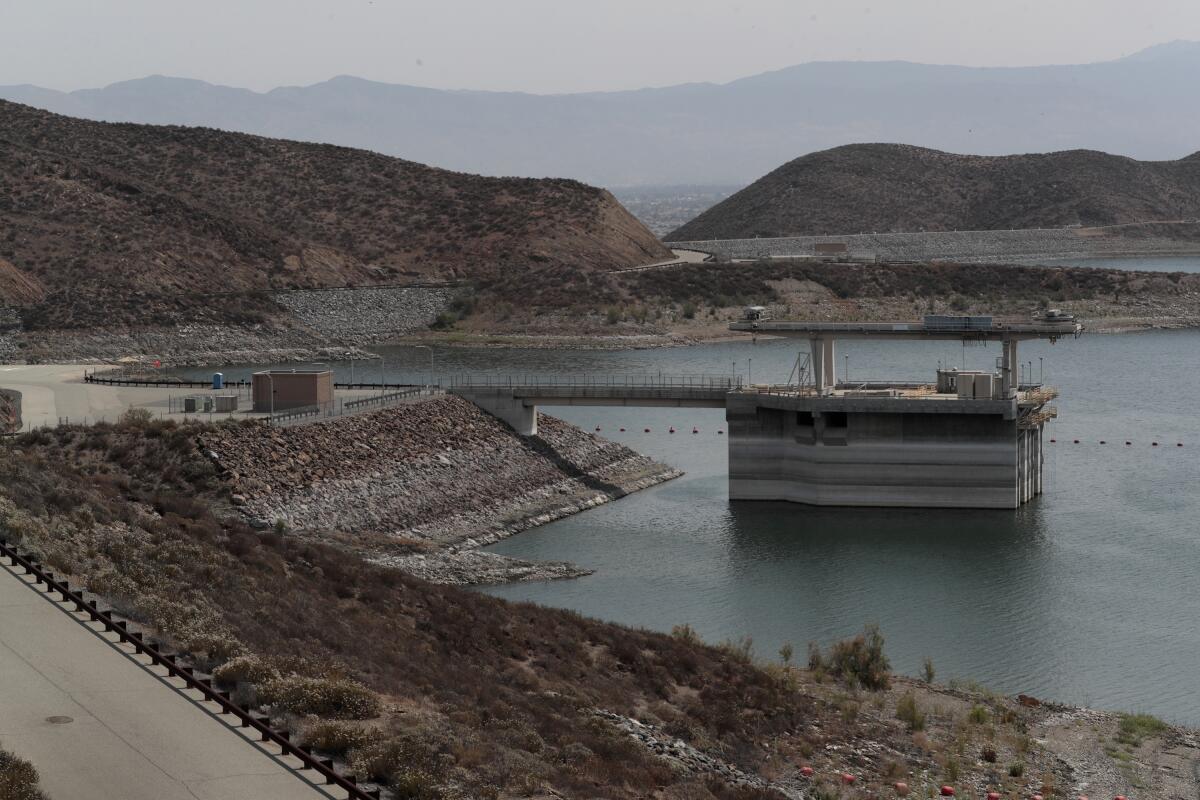
For the first time ever, Southern California’s Metropolitan Water District will limit outdoor watering to one day per week for about 6 million people, including much of Los Angeles. Details here from The Times’ Ian James, who writes that limited supplies in the reservoirs of the State Water Project prompted the restrictions. Homes across the state are facing similar drought rules, including 1.4 million East Bay residents, Paul Rogers reports for the East Bay Times. Here are some tips on how to conserve, from my colleagues Jessica Roy and Matthew Ballinger. And lest you think recent rain and snow might save us, Hayley Smith writes that 95% of California is still experiencing severe or extreme drought. Unless that changes — or unless homes use a lot less water — the Metropolitan Water District could ban outdoor watering entirely across parts of Southern California come September.
A new bill in the California Legislature would create a pilot program paying some farmworkers $1,000 per month for three years to help them cope with climate change impacts. Rising temperatures have begun to reduce agricultural work by fueling drought and shortening the growing season, The Times’ Nathan Solis writes in his story on the legislation, which was introduced by Sen. Melissa Hurtado. It’s one of many climate-related proposals circulating in Sacramento. A bill that would promote water conservation by lowering the standard for residential water use cleared the Senate, Adam Beam reports for the Associated Press. Another bill that would shut down three ocean oil rigs off the Orange County coast passed its first committee but still faces steep political obstacles, my colleague Phil Willon writes. And legislation from Sen. Henry Stern that would shut down the Aliso Canyon gas storage field also made it through its first committee on an 8-1 vote, per Olga Grigoryants at the Los Angeles Daily News.
Air quality in the Eastern U.S. and Midwest has been getting better compared to the West, where climate-fueled fires are driving more pollution after decades of progress. Kylie Mohr wrote for High Country News about this finding and more from the American Lung Assn.’s latest air-quality report card. The association found that the L.A.-Long Beach area still has the nation’s worst smog, Kristy Hutchings reports for the Los Angeles Daily News. In a positive development, the L.A. Unified School District now has 200 air-quality sensors installed on campuses throughout the city, per Linh Tat at the Daily News. And in related news, California and other states may need to reduce some pollution to improve the air breathed by Coloradans, with the Environmental Protection Agency planning to extend its “Good Neighbor Rule” to the Western U.S. for the first time, the Denver Post’s Noelle Phillips writes.
WATER POLITICS
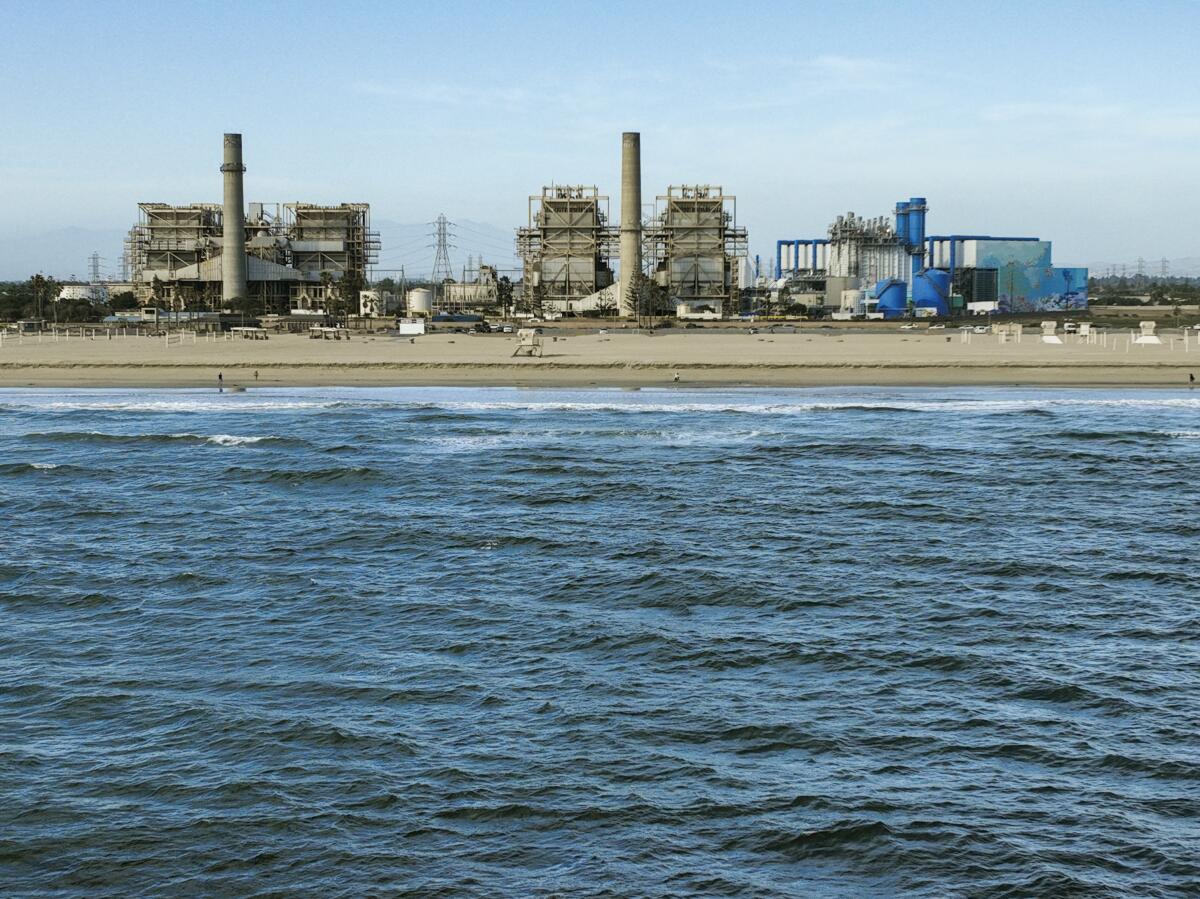
The California Coastal Commission could decide next month whether to allow a massive seawater desalination plant along the Orange County shoreline. Agency staff recommended this week that commissioners reject the project, as Ian James writes in an in-depth story scrutinizing the costs and benefits. Elsewhere in the drought-stricken West, the Nevada Independent’s Daniel Rothberg reports that the seven Colorado River Basin states agreed to hold back 480,000 acre-feet of water at Lake Powell, even if it means water levels fall even further at Lake Mead downstream. The Upper Basin states will also release 500,000 acre-feet from Flaming Gorge Reservoir in Wyoming to try to keep Lake Powell from crashing, Chris Outcalt reports for the Colorado Sun.
A state audit confirmed The Times’ reporting about discrimination and harassment at the Metropolitan Water District of Southern California. Adam Elmahrek wrote about the audit’s findings, including whistleblower retaliation, high-level interference in ethics investigations, dangerous housing conditions and more at the powerful agency. You should also read Adam’s original story, which spurred the audit, if you haven’t already. In another water agency scandal, David Wright, former general manager of the L.A. Department of Water and Power, was sentenced to six years in prison for agreeing to accept bribes, Dakota Smith reports.
“I ask for wisdom, and for the right words to say to the LADWP.” A coalition of tribes have nominated 186 square miles of the mostly dry Owens Lake for designation as a national historic site, saying the lakebed — which was infamously drained by the city of L.A., and was also the site of several massacres of Native Americans — is sacred ground and important for wildlife, The Times’ Louis Sahagún reports. In another battle over vast landscapes, Nebraska Gov. Pete Ricketts has emerged as a leading voice against the “30 by 30” campaign to protect 30% of America’s lands and waters by 2030. HuffPost’s Chris D’Angelo has an inside look at how a fringe far-fight group enlisted Ricketts to oppose President Biden’s 30 by 30 initiative, known as “America the Beautiful.”
THE ENERGY TRANSITION
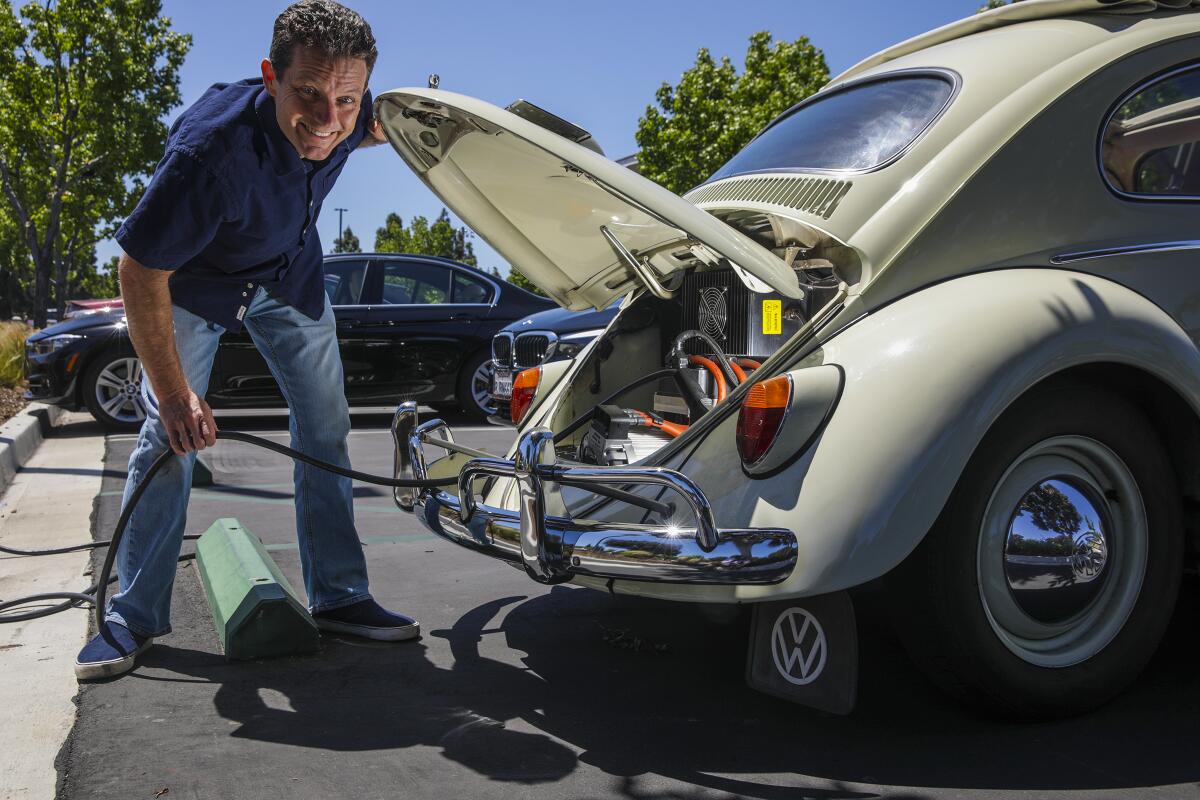
So many people want to convert their classic cars from gas to electric that the few companies doing the work have years-long waitlists. Here’s the fascinating story by my colleague Ronald D. White, who writes that the trend has accelerated recently due to high gas prices, climate concerns and supply-chain problems leading to a shortage of new electric cars. Skateboarding legend Tony Hawk is getting in on the action too. In other transportation news, Oregon officials are planning several big freeway expansions that critics say would worsen emissions for decades, Nadja Popovich and Brad Plumer report for the New York Times.
The Biden administration intends to issue a $504-million loan guarantee to a project that would supply Los Angeles with renewable hydrogen for its power plant in Utah. The financial support from the federal Department of Energy is a major victory for the Advanced Clean Energy Storage project, as David Iaconangelo reports for E&E News. The hydrogen would be stored in underground salt caverns and support the L.A. Department of Water and Power’s efforts to replace a coal-fired power plant with a natural gas plant, and eventually convert the facility to run on 100% hydrogen. I wrote about the hydrogen plan last year.
Many toxic chemicals found in fracking wastewater are also found in “regular” oil-drilling wastewater. So why did California ban the use of fracking wastewater to grow crops, and not the “regular” stuff? Liza Gross tried to find out, writing for Inside Climate News that “chemicals used in both fracking and conventional oil drilling interact with one another, and with other natural compounds like arsenic and anthracene, to produce new compounds that can be more toxic than the individual chemicals.”
WILDLIFE AND WILDFIRE
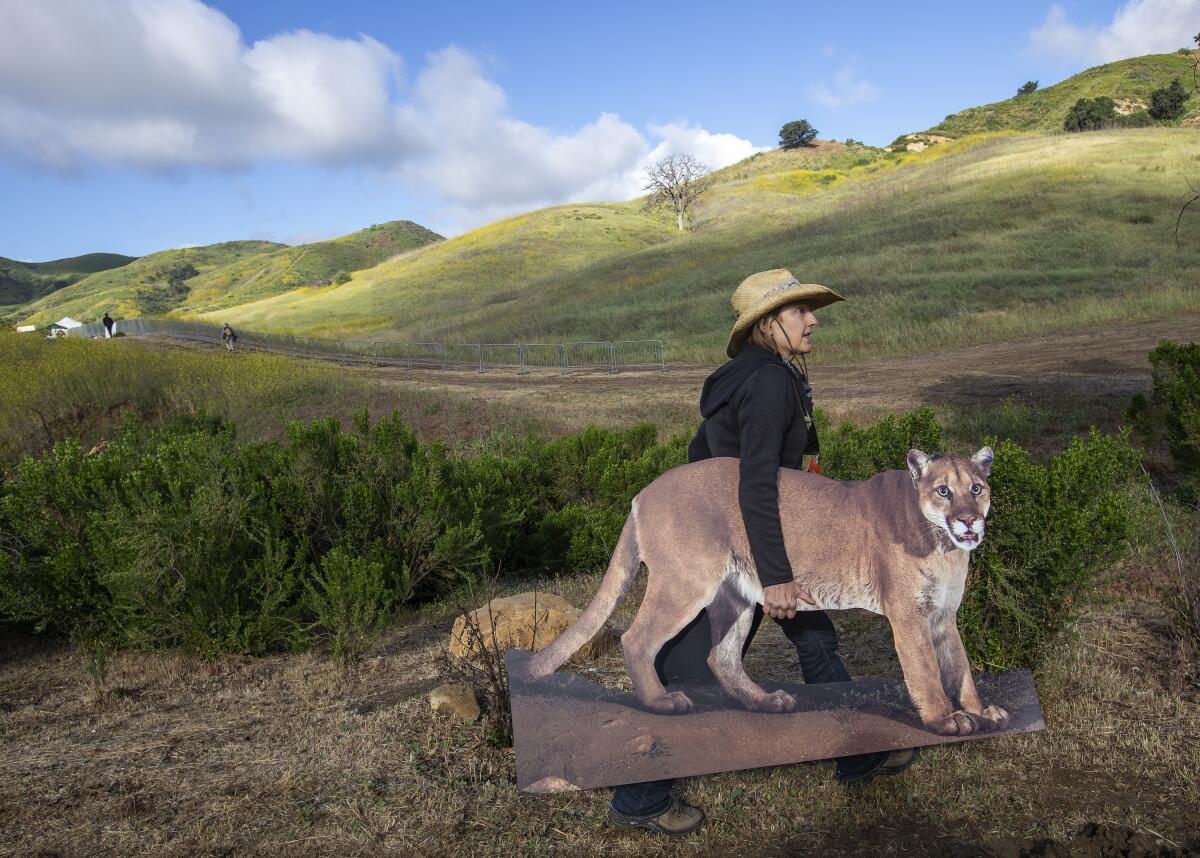
California’s transportation agency broke ground on a first-of-its-kind wildlife crossing over the 101 Freeway west of Los Angeles, to help protect at-risk mountain lions and other animals by giving them more room to roam. Here’s the hopeful Earth Day story by my colleague Louis Sahagún, who reports that wildlife advocates raised $87 million to fund the project. It will hopefully benefit cougars such as P-22, aka L.A.’s “favorite wild bachelor,” per this recent profile by The Times’ Laura J. Nelson. Laura writes that the Griffith Park mountain lion is likely nearing the end of its life, but is still going strong against all odds.
Wildfires are burning across the West — not unusual in the spring, but they’re usually not this big or destructive. So writes Jonathan P. Thompson in his Land Desk newsletter, noting that Arizona’s Sunset Crater Volcano National Monument — which I was lucky enough to visit a few years ago — has “burned in its entirety,” per the National Park Service. In Colorado, one fire was ignited when a drone studying severe weather crashed, which is a bitter irony. Also unfortunate: Snowpack is melting faster in burned-out forests, worsening the West’s water crisis, Brittany Peterson reports for the Associated Press. President Biden issued an Earth Day order meant to protect forests, by instructing federal agencies to inventory mature and old-growth trees that excel at keeping carbon out of the atmosphere — but he didn’t protect those trees from logging, the AP’s Matthew Daly and Josh Boak write.
The Center for Biological Diversity wants to see pinyon jays protected under the Endangered Species Act. The social birds distribute piñon seeds that help sustain piñon-juniper forests across the West, but their numbers have declined an estimated 80% over 50 years, the AP’s Susan Montoya Bryan reports. Pinyon jays face a long list of threats, including woodlands being cleared for housing, farms and solar and wind energy, conservationists say. The birds are most prevalent today in Nevada and New Mexico.
ONE MORE THING

In last week’s Boiling Point newsletter, I reached out to five leading candidates for Los Angeles mayor to ask them about their plans for confronting the climate crisis. Only Rick Caruso — a billionaire real estate developer — declined to talk with me.
This newsletter wasn’t the only place Caruso declined to share his views on climate.
Several mayoral candidates — Rep. Karen Bass, City Councilmember Kevin de León, City Atty. Mike Feuer and real estate agent Mel Wilson — joined a debate hosted by the L.A. League of Conservation Voters last week. Once again, Caruso didn’t participate.
The Caruso campaign told me he would release a climate plan in the coming weeks. I’m eager to see what it says.
We’ll be back in your inbox next week. If you enjoyed this newsletter, please consider forwarding it to your friends and colleagues.
For the record: Last week’s edition referred to Aaron Sorkin’s involvement in the sixth season of “The West Wing.” Sorkin left the show after the fourth season.
